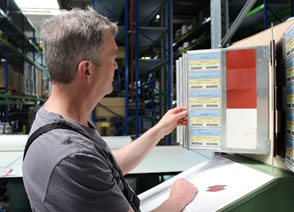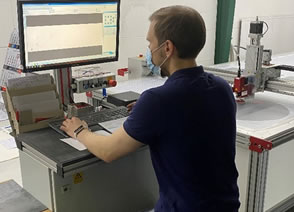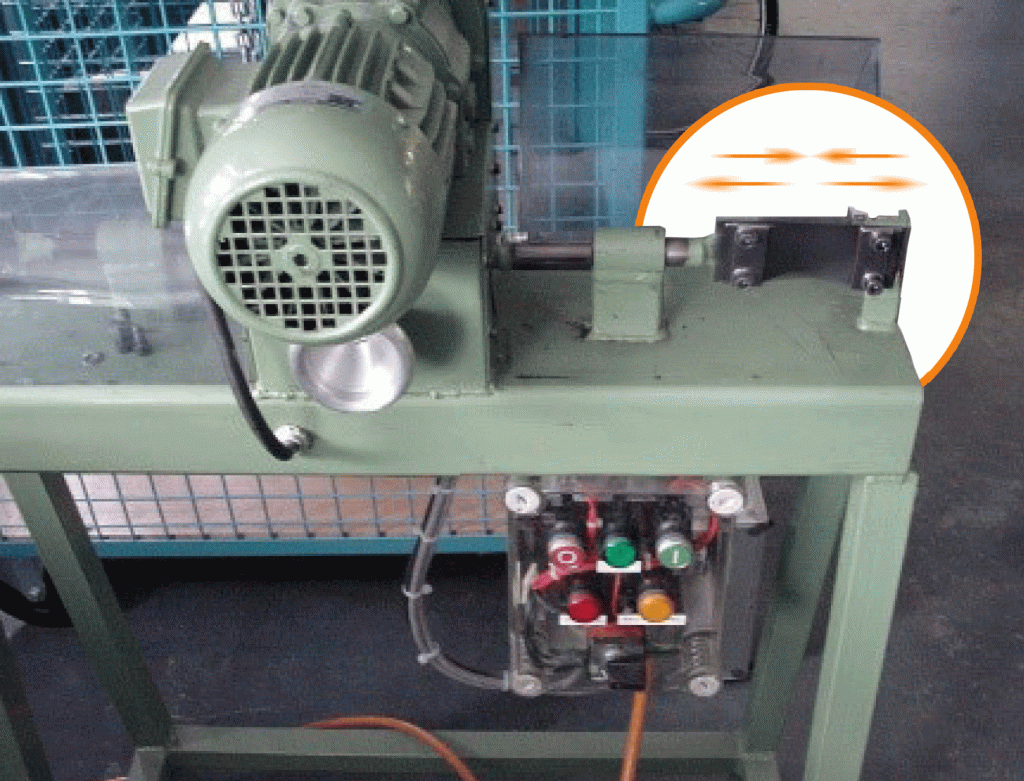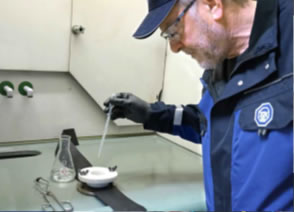2.1 Quality specifications
Single-ply fabric expansion joints must comply with the following requirements.
2.1.1 Materials

->
Elastomers are, e, g.:
– fluorcarbon rubber (FPM),
– ethylene-propylene-terpolymer (EDPM),
– butyl rubber (II R, C II R, B II R) ),
– chlorsulphonated polyethylene (GSM).
Thermoplasts are, e. g.:
– polytetrafluorethylene (PTFE),
– polyvinylchloride (PVC).
Support materials are knitted or woven fabrics made of e.g.:
– stainless steel,
– glass,
– synthetic,
– fibre composite materials.
All the materials used by the manufacturer must be listed on the material data sheet.
The manufacturer’s specifications, e. g. in his leaflets, must be consistent with the characteristic data of the material data sheet.
2.1.2 Material data sheet

The material data sheet must contain at least the following characteristic data of the elastomers/thermoplasts:
->
(1) An identifiable material designation
(2) The permissible maximum temperature
– in continuous operation,
– under critical load,
A critical load is defined as a nonrecurring rise in temperature and/or pressure for a maximum duration of
15 minutes only once in the lifetime.
(3) Chemical resistance
The chemical resistance might be specified referencing e. g. to the DECHEMA Material Table. Where individual specifications of chemical resistance are issued with respect to special media, it is necessary to quote the acting medium, its concentration, its temperature and its duration of action.
(4) Mechanical characteristic values must be specified in terms of:
– Tensile strength,
– elongation at fracture,
– shore A hardness.
2.1.3 Production data sheet

The production data sheet must list the same materials used for the fabric expansion joint as are specified in the material data sheet.
->
The production data sheet must include as a minimum:
– the materials used,
– the design,
– processing instructions,
– dimensional specifications.
2.1.4 Tightness

->
2.1.4.1 Flue gas tightness
A flue gas-tight expansion joint must be tight in both the bellow and clamping area according to EN 1593 and TI-002 when using the fastening method and the flange surface specified by the manufacturer.
2.1.4.2 Nekal-tightness
A Nekal®-tight expansion joint must be tight in both the bellow and clamping area according to EN 1593 and TI-003 when using the fastening method and the flange surface specified by the manufacturer.
2.1.5 Fatigue strength under cyclic bending stresses

The compound material, including its splice/butt joint, must withstand 100.000 reversed bending cycles.
2.2 Test specifications
2.2.1 Design

The design of the fabric expansion joint must be supported by a drawing or scheme in addition to the production data sheet.
2.2.2 Materials

The identity of the elastomers/thermoplasts used must be verified in respect to their mechanical characteristics by a works certificate in conformance with EN 10204/2.2.
The identity of the raw and processed materials must be verified by a works certificate issued by the manufacturer of the primary product in accordance with EN 10204/2.1.
->
Technical Information TI-018
2.2.3 Thermostability

The test must be based on DIN 53508.
->
The test period shall run for 28 days at the continuous service temperatures specified for the various elastomers or thermoplasts.
After 28 days the elongation at breakpoint must not differ by more than 30 % from the initial value.
After the test period of 28 days there must not be a change of more than +/- Shore A in the hardness according to ISO 7619-1.
Technical Information TI-016
2.2.4 Chemical resistance

The chemical resistance test must be based on ISO 1817.
->
Details concerning the specific application must be discussed with the independent test centre so that they can be taken into account in its testing.
The test period shall run for 28 days, with interim results recorded after 7 and 14 days in accordance with ISO 1817.
The maximum permissible change of hardness is +/- 10 Shore A. After the test period of 28 days the mass swelling must not exceed 10 %. Should the quoted mass swelling value be exceeded after 28 days, the swelling curve must exhibit an asymptotic approximation to a state of equilibrium. After the approximation is established, the mass swelling must not exceed 30 % under any circumstances.
2.2.5 Mechanical values

Testing of the mechanical values quoted in the material data sheet must be based on DIN 53504 and ISO 7619-1.
->
Technical Information TI-001
2.2.6 Tightness

The flange of the test apparatus must display the same quality of surface specified by the manufacturer in accordance with Section 2.1.4.
->
The leak test must be carried out according to EN 1593 and TI-005.
No bubbles must appear when applying a test pressure equal to one-and-a-half times the nominal pressure but at least 50 hPa.
Technical Information TI-005
2.2.7 Fatigue strength under cyclic bending stresses

Testing of the fatigue strength under cyclic bending stresses must be based on ISO 132.
->
Testing of the fatigue strength under cyclic bending stresses must be based on ISO 132. The specimen, however, must be at least 100 mm wide. The samples used in this case do not have a notch. The frequency shall be 1 Hz.
The test must be carried out with the expansion joint material as well as with its seam/joint.
A total of 100.000 cycles must be reached without any signs of damage.
